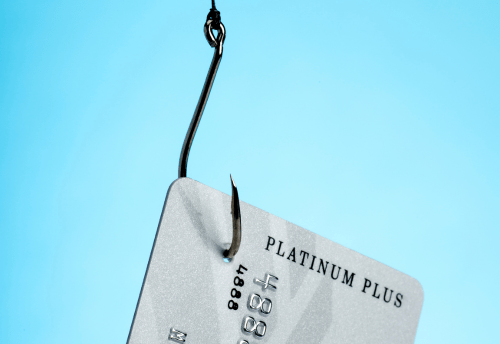Many of us have experienced the convenience of using credit cards. However, relying solely on minimum payments can trap you in a cycle of debt with hidden costs that can significantly impact your financial well-being. This newsletter explores the true cost of minimum payments, how to break free from the cycle, and shares inspiring stories of individuals who have overcome credit card debt.


The Deceptive Nature of Minimum Payments:
While minimum payments may seem manageable initially, they are often a fraction of the total debt owed. This can lead to a deceptive illusion of progress, masking the reality of prolonged debt and accruing interest charges.
The True Cost: Interest Piles Up, Freedom Shrinks:
Let’s consider an example: with a $10,000 credit card balance and a 20% interest rate, assuming you do not use the card again and you are just paying off the balance, the minimum payment might be around $300 per month. However, at this rate, it would take over 66 years to pay off the debt, and you’d end up paying a whopping $46,168 in interest alone!
By paying an extra $100 each month, you could clear the entire balance in just 2 years and 8 months, plus just $2,762 in interest paid! Can you believe the massive impact just $100 in extra payments can make? That’s a difference of 63 years and over $43,000 in interest saved!
You can calculate how long it will take you to pay off your credit card debt using this Credit Card Calculator. https://moneysmart.gov.au/credit-cards/credit-card-calculator
Debt Relief Strategies:
Fortunately, there are strategies to escape the minimum payment trap and achieve financial freedom:
1. Increase Your Payments:
- Impact:
- Reduce the repayment period: Even a small increase, say $25-$50 per month, can drastically cut down the time it takes to pay off your debt. This means you’ll be free from debt sooner and save money on interest charges in the long run.
- Lower interest accrued: Every additional dollar you pay goes towards the actual balance, reducing the amount subject to interest. This translates to significant savings on interest charges over time.
- Action steps:
- Review your budget and identify areas where you can cut back on spending (e.g., dining out, entertainment).
- Allocate the saved amount towards increasing your credit card payments.
- Set up automatic transfers to ensure consistent payment increases.
2. Consider a Balance Transfer:
- Benefit: Transferring your debt to a card with a lower interest rate (0% introductory APR for a balance transfer period) can provide temporary relief from high-interest charges. This “buying time” allows you to:
- Focus on paying down the principal: By minimising interest, you can direct more funds towards reducing the actual debt amount.
- Potentially save money: The lower interest rate during the introductory period can significantly reduce the total interest paid compared to the original card’s rate.
- Considerations:
- Look for cards with 0% introductory APR offers on balance transfers, typically lasting 12-18 months.
- Be aware of balance transfer fees. Additionally, note that the 0% interest rate typically applies only to the transferred balance, which means if you use the card for other purchases, you might incur higher than usual interest rates.
- Have a solid plan to pay off the transferred balance before the introductory period ends to avoid accruing high interest again.
3. Explore Debt Negotiation:
- Concept: Negotiating with your creditors directly to:
- Lower interest rates: Reducing your interest rate can significantly decrease your repayment time frame and save money on interest charges in the long run.
- Settle your debt for a lump sum payment: This option involves paying a portion of the total debt owed as an agreed full debt settlement to close the account. It can be beneficial if you can put together the funds needed to settle the agreed amount and close the account.
- Advantages:
- Potentially lower monthly payments: Negotiating a lower interest rate or settling for a lump sum can reduce your monthly financial burden and increase your overall cashflow.
- Faster debt payoff: Lowering your payments can free up funds to allocate towards faster debt repayment.
- Disadvantages:
- Can be overwhelming and tedious: Navigating the negotiation process can be overwhelming and tedious, especially if you’re unfamiliar with what to ask for and how to proceed. Creditors may request a multitude of information or documents, and the process can be both lengthy and emotionally taxing. Be prepared to invest time, conduct thorough research, and exercise patience when negotiating directly with your creditors.
- Success not guaranteed: Negotiations with creditors may not always be successful, and they are not obligated to agree to your terms.
4. Seek Professional Guidance:
Despite common misconceptions, individuals do not need to endure the burden of debt unnecessarily. If you’re struggling to make ends meet, remember that you have options. Seek assistance to alleviate the pressure and benefit from guidance and support throughout the process.
- Benefits:
- Personalised advice: Debt relief agencies offer personalised guidance based on your unique financial situation and goals.
- Debt management plan: They can help you create a realistic and manageable debt repayment plan that considers your income and expenses.
- Negotiation assistance: They will negotiate with your creditors on your behalf to lower your interest rates or monthly payments, long-term arrangements, partial or where appropriate, full debt waivers.
- Financial education: They provide educational resources and tools to help you develop healthy financial habits and avoid future debt problems.
- Considerations:
- Look for reputable debt relief agencies accredited by the Australian Securities and Investments Commission (ASIC).
- Many agencies offer free or low-cost initial consultations. At Debt Angel Solutions, we offer a free debt consultation. You can book your free consultation call on our website by clicking the link here.


Remember: Taking control of your finances and escaping the minimum payment trap requires commitment and effort. Combining these strategies with the support of professional guidance can empower you to achieve financial freedom and build a secure future.
Tools and Resources for Success
Several tools and resources can aid your debt reduction journey:
- Budgeting apps: Track your income and expenses to identify areas where you can cut back and allocate more funds towards debt repayment.
- Debt support groups: Connect with others facing similar challenges for encouragement and motivation.
Remember: Taking control of your finances and escaping the minimum payment trap requires commitment and effort. Combining the right strategies and resources can empower you to achieve financial freedom and build a secure future.
We encourage you to explore the resources mentioned above and consider seeking professional guidance if needed. You are not alone in this journey, and there is a path towards financial wellness waiting for you.
Success Stories: Inspiration and Hope


